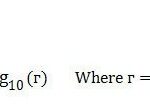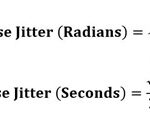What is UL and DL in LTE?
Today, we are going to explore two important terms in LTE (Long-Term Evolution) technology: UL and DL. These abbreviations stand for Uplink (UL) and Downlink (DL), and they refer to the data flow direction between the User Equipment (UE) and the network. Understanding these terms is essential for grasping how data is transmitted in mobile networks, especially in LTE.
In simple terms:
- Uplink (UL): This refers to the transmission of data from the user device (UE) to the network. It’s the path that your device uses to send data, such as uploading a photo, sending a message, or making a video call.
- Downlink (DL): This refers to the transmission of data from the network to the user device. When you download content, stream videos, or receive data from the internet, you’re utilizing the downlink.
Both uplink and downlink are integral to ensuring a smooth and efficient mobile data experience. Let’s dive into these two components in more detail.
Uplink (UL) in LTE
The uplink is the direction in which data flows from the mobile device (UE) to the cell tower (eNodeB) and, eventually, to the rest of the network. Uplink is used for actions like:
- Sending SMS or MMS messages.
- Uploading files to the cloud or social media.
- Making video calls or sending voice packets for VoLTE (Voice over LTE).
Uplink data speeds tend to be lower than downlink speeds in most LTE networks, as users typically consume more data (downloading) than they generate (uploading). In LTE, the uplink is assigned specific frequency bands within the allocated spectrum for communication.
Downlink (DL) in LTE
The downlink is the opposite of uplink. It’s the direction in which data flows from the cell tower (eNodeB) to the mobile device (UE). This is the primary direction for most data traffic, such as:
- Browsing the internet.
- Streaming videos or music.
- Receiving large files or updates on the device.
Downlink speeds are typically higher than uplink speeds, as more resources are allocated to handle the higher volume of data consumption. LTE networks are designed to optimize downlink performance, enabling faster browsing and media consumption for users.
Uplink vs Downlink in LTE Networks
The difference in uplink and downlink is not just in their data flow direction but also in how they are prioritized. Let’s take a look at some key differences:
| Aspect | Uplink (UL) | Downlink (DL) |
|---|---|---|
| Data Flow | Device to Network | Network to Device |
| Data Usage | Typically lower | Typically higher |
| Speed | Lower compared to DL | Higher compared to UL |
| Usage Examples | Uploading files, sending messages | Streaming, browsing, downloading files |
In the design of LTE networks, much of the bandwidth and resource allocation is focused on improving downlink performance, as this is where most data traffic occurs. However, the uplink is still important, especially with applications like video calling, online gaming, and uploading large files.
As we discussed in previous articles, LTE was designed to offer faster and more efficient mobile data services. The separation of uplink and downlink allows the network to optimize data flow, providing faster downloads and better overall user experience. Understanding the roles of UL and DL in LTE will help you appreciate the underlying design that ensures data is delivered efficiently in both directions.

